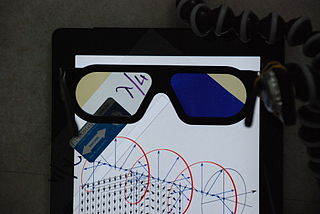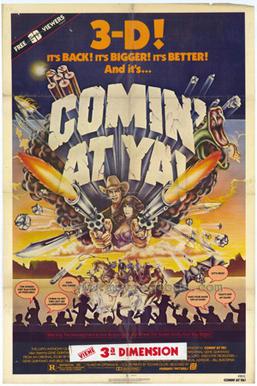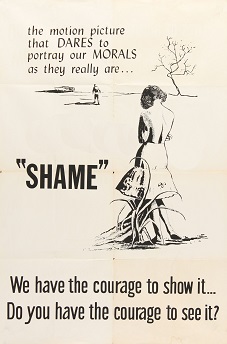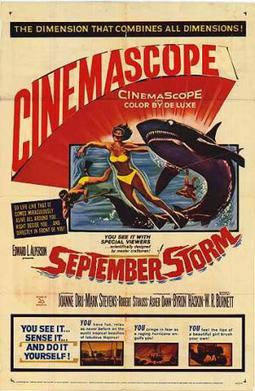
Digital cinema refers to the adoption of digital technology within the film industry to distribute or project motion pictures as opposed to the historical use of reels of motion picture film, such as 35 mm film. Whereas film reels have to be shipped to movie theaters, a digital movie can be distributed to cinemas in a number of ways: over the Internet or dedicated satellite links, or by sending hard drives or optical discs such as Blu-ray discs.

A planetarium is a theatre built primarily for presenting educational and entertaining shows about astronomy and the night sky, or for training in celestial navigation.

A movie theater, cinema, or cinema hall, also known as a movie house, picture house, picture theater or simply theater, is a business that contains auditoria for viewing films for public entertainment. Most are commercial operations catering to the general public, who attend by purchasing tickets.

IMAX is a proprietary system of high-resolution cameras, film formats, film projectors, and theaters known for having very large screens with a tall aspect ratio and steep stadium seating, with the 1.43:1 ratio format being available only in few selected locations.

Cinerama is a widescreen process that originally projected images simultaneously from three synchronized 35mm projectors onto a huge, deeply curved screen, subtending 146-degrees of arc. The trademarked process was marketed by the Cinerama corporation. It was the first of several novel processes introduced during the 1950s when the movie industry was reacting to competition from television. Cinerama was presented to the public as a theatrical event, with reserved seating and printed programs, and audience members often dressed in their best attire for the evening.
3D films are motion pictures made to give an illusion of three-dimensional solidity, usually with the help of special glasses worn by viewers. They have existed in some form since 1915, but had been largely relegated to a niche in the motion picture industry because of the costly hardware and processes required to produce and display a 3D film, and the lack of a standardized format for all segments of the entertainment business. Nonetheless, 3D films were prominently featured in the 1950s in American cinema, and later experienced a worldwide resurgence in the 1980s and 1990s driven by IMAX high-end theaters and Disney-themed venues. 3D films became increasingly successful throughout the 2000s, peaking with the success of 3D presentations of Avatar in December 2009, after which 3D films again decreased in popularity. Certain directors have also taken more experimental approaches to 3D filmmaking, most notably celebrated auteur Jean-Luc Godard in his film Goodbye to Language.

National Lampoon's Vacation, sometimes referred to as simply Vacation, is a 1983 American road trip comedy film directed by Harold Ramis starring Chevy Chase, Beverly D'Angelo, Imogene Coca, Randy Quaid, John Candy, and Christie Brinkley in her acting debut with special appearances by Eddie Bracken, Brian Doyle-Murray, Miriam Flynn, James Keach, Eugene Levy, and Frank McRae.

A movie projector is an opto-mechanical device for displaying motion picture film by projecting it onto a screen. Most of the optical and mechanical elements, except for the illumination and sound devices, are present in movie cameras. Modern movie projectors are specially built video projectors.

A 3D display is a display device capable of conveying depth to the viewer. Many 3D displays are stereoscopic displays, which produce a basic 3D effect by means of stereopsis, but can cause eye strain and visual fatigue. Newer 3D displays such as holographic and light field displays produce a more realistic 3D effect by combining stereopsis and accurate focal length for the displayed content. Newer 3D displays in this manner cause less visual fatigue than classical stereoscopic displays.

Jaws 3-D is a 1983 American horror film directed by Joe Alves and starring Dennis Quaid, Bess Armstrong, Simon MacCorkindale and Louis Gossett Jr. It is the second sequel to Steven Spielberg's Jaws and the third installment in the Jaws franchise. The film follows the Brody children from the previous films to SeaWorld, a Florida marine park with underwater tunnels and lagoons. As the park prepares for opening, a young great white shark infiltrates the park from the sea, seemingly attacking and killing the park's employees. Once the shark is captured, it becomes apparent that a second, much larger shark also entered the park and was the real culprit.
A silver screen, also known as a silver lenticular screen, is a type of projection screen that was popular in the early years of the motion picture industry and passed into popular usage as a metonym for the cinema industry. The term silver screen comes from the actual silver content embedded in the material that made up the screen's highly reflective surface.

Muppet*Vision 3D is a 3D film attraction located at Disney's Hollywood Studios in Walt Disney World. The attraction also formerly operated at Disney California Adventure. Directed by Jim Henson, the attraction consists of a pre-show which then leads into Kermit the Frog guiding park guests on a tour through Muppet Studios, while the Muppets prepare their sketch acts to demonstrate their new breakthrough in 3D film technology. The show, however, completely unravels when Dr. Bunsen Honeydew's experimental 3D sprite, Waldo, causes mayhem during the next portion of the show.

A polarized 3D system uses polarization glasses to create the illusion of three-dimensional images by restricting the light that reaches each eye.

She Was an Acrobat's Daughter is an animated short in the Merrie Melodies series, produced by Vitaphone Productions and released by Warner Bros. Pictures, Inc. on April 10, 1937. This animated short was directed by I. Freleng and produced by Leon Schlesinger. The short is currently available to stream on Max and is a part of the Ultra HD Blu-ray, Blu-ray and iTunes releases of Goodfellas as a part of a Merrie Melodies & Looney Tunes bonus features compilation.

Comin' at Ya! is a Spanish-American 3D Western film, featuring Tony Anthony, Victoria Abril and Gene Quintano and directed by Ferdinando Baldi.

RealD 3D is a digital stereoscopic projection technology made and sold by RealD. It is currently the most widely used technology for watching 3D films in theaters. Worldwide, RealD 3D is installed in more than 26,500 auditoriums by approximately 1,200 exhibitors in 72 countries as of June 2015.

The Intruder, also known as I Hate Your Guts, Shame and The Stranger, is a 1962 American drama film directed and co-produced by Roger Corman and starring William Shatner. The story, adapted by Charles Beaumont from his own 1959 novel of the same name, depicts the machinations of a racist named Adam Cramer, who arrives in the fictitious small Southern town of Caxton in order to incite white townspeople to racial violence against black townspeople and court-ordered school integration.
A movie gimmick is an unusual idea intended to enhance the viewing experience of a film, and thus increase box office sales. Many of these have been used for just a few films, proving unpopular with either audiences or cinema owners. Smell-o-vision, which involved releasing relevant odors during the film, only appeared in the film Scent of Mystery as audiences did not enjoy the experience. Sensurround, a method for enhancing sound pioneered for the 1974 film Earthquake, was abandoned as it sometimes resulted in damage to movie theatres. Other 'gimmicks' have gradually become more common in cinema, as technology has improved. Examples include 3-D film and the use of split screen, which was originally achieved through the use of dual projectors in cinemas.

September Storm is a 1960 American adventure film directed by Byron Haskin and starring Joanne Dru and Mark Stevens.

The Scotiabank Theatre Toronto is a major movie theatre at the RioCan Hall in the Entertainment District of downtown Toronto, Ontario, Canada at Richmond and John Street owned by Cineplex Entertainment for the building and the lands owned by RioCan. Opened in 1999, the venue screens theatrical films throughout the year, but is best known as one of the major venues for the annual Toronto International Film Festival alongside the nearby TIFF Bell Lightbox.

















